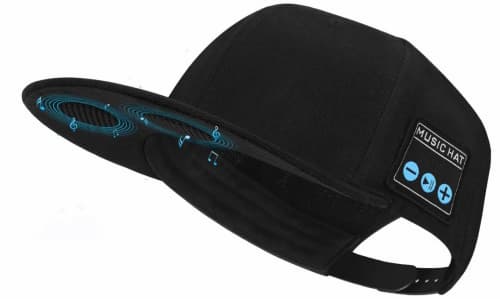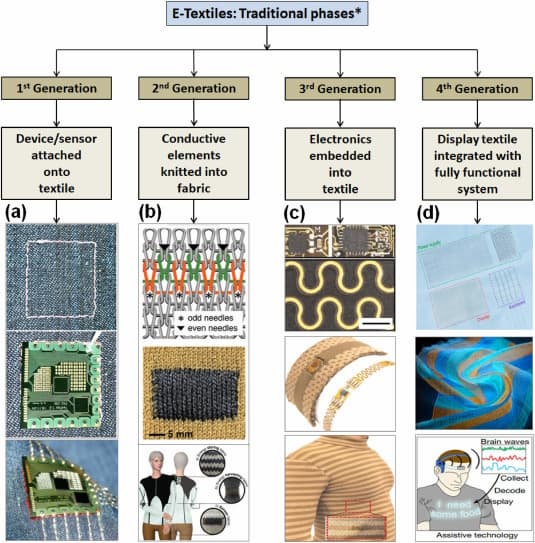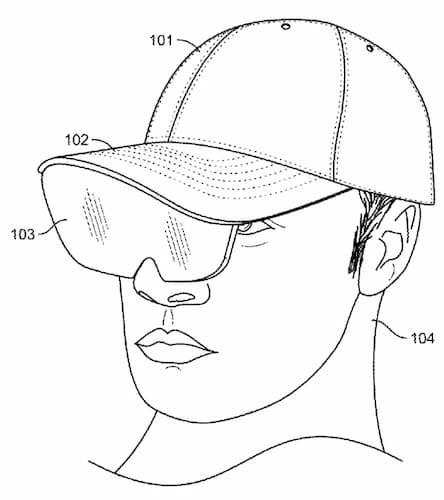
25 October, 2023
The Future of Caps: Beyond the Brim and Into the Digital Era
Initially, baseball caps are part of the baseball uniform and have become cultural icons, flaunted by celebrities and commoners alike. Over the years, they've evolved from their simplistic design and primary purpose of shielding eyes from the sun. As we navigate the 21st century, technological advancements have begun to leave their mark on this classic accessory. Some of the cutting-edge innovations in baseball cap designs that are redefining their functionality are below.
1. Caps with Built-in Headphones

The fusion of tech with textiles has witnessed tremendous growth, and baseball caps with built-in headphones are a prime example of this melding. The primary challenge in designing such caps was ensuring the technology didn't disrupt the cap's aesthetics or comfort. Modern designs house the headphone components discreetly within the cap's lining, making it almost indistinguishable from standard baseball caps.
Contrary to initial scepticism, many of these headphone-integrated caps deliver excellent sound quality. Advances in miniaturised speaker technology allow for clear audio, impressive bass, and even noise cancellation capabilities in some premium models. Some incorporate touch-sensitive controls, allowing wearers to adjust volume, skip tracks, or answer calls by simply tapping or swiping the cap's surface. Others have dedicated buttons subtly placed, ensuring easy access while maintaining a sleek design.
Ensuring longevity of playback and standby time has been crucial. Many of these caps come equipped with tiny, efficient batteries that can offer hours of music playback. Additionally, they often employ USB-C or micro USB ports discreetly placed within the cap's interior for charging, ensuring that wearers are always just a short charge away from their music.
A baseball cap is exposed to various elements, from sweat during workouts to unexpected rain showers. Recognising this, manufacturers have incorporated water and sweat-resistant technology. Additionally, many designs have detachable electronic components, allowing users to wash their caps without any worry. Bluetooth technology ensures they are universally compatible with most devices, be it smartphones, tablets, or smartwatches. The pairing process is usually as simple as connecting regular Bluetooth earphones. Some advanced models even offer quick-pairing features with specific devices, enhancing user convenience.
2. Smart Fabric Technologies

In today's rapidly evolving technological landscape, clothing and accessories are no longer just about style or comfort. The advent of smart fabrics, commonly referred to as e-textiles, is an exemplary testament to this shift. These fabrics, which can conduct energy and interconnect circuits, are pushing the boundaries of what we traditionally expect from wearables. So, how does this futuristic fabric technology redefine the classic baseball cap?
A) Health Monitoring
Modern life's hustle often means we need convenient ways to monitor our health. Smart baseball caps could be the solution:
Precision Sensors: Tucked away within the fabric or the cap's lining, precision sensors can capture a plethora of vitals. From tracking heart rate fluctuations during a high-intensity workout to monitoring body temperature on a hot day, they become more than just a fashion statement.
Feedback & Alerts: Paired with a smartphone app, they can provide real-time data analysis, notifying wearers of any anomalies. For instance, if a wearer's heart rate spikes unusually or body temperature rises beyond a set threshold, it can send an immediate alert.
Holistic Health Tracking: Integrating with other health apps, it could potentially provide insights into how external factors, like weather changes or air quality, affect individual health metrics.
B) Adaptive Aesthetics
The cap of the future could be your most adaptable accessory:
Thermochromic and Photochromic Materials: These are materials that change their hue based on temperature or light exposure. Picture a cap that shifts shades as the day progresses or as temperatures fluctuate.
Mood Sensing: Using biofeedback sensors to detect changes in the wearer's physiological responses (like sweat or temperature), it could alter its colour or pattern, uniquely reflecting the wearer's emotional state.
3. Interactive Interfaces

Transforming passive wearables into active interaction hubs:
Conductive Threads: These threads act as pathways for electrical signals. By integrating them into specific sections of the cap, areas become touch-sensitive zones, functioning similarly to touchpads on electronic devices.
Device Control: Need to switch tracks on your playlist or answer a call without taking out your phone? A simple swipe or tap on your cap could make it possible. It can connect wirelessly to devices, providing control right at the wearer's fingertips.
Customisable Functions: Wearers can customise what each touch or swipe command does through associated apps. The possibilities could be vast, whether activating a voice assistant, sending a quick text, or adjusting ambient settings on smart home devices.
4. Caps with UV Sensors
While providing shade is a given when it comes to baseball caps, the real game-changer is the incorporation of UV (ultraviolet) sensors. This innovative feature ensures wearers are not just protected, but also informed. For our harsh climate in Australia, this is a game changer
A) Understanding UV Sensors
Functionality: UV sensors are specially designed to detect ultraviolet radiation levels from the sun. When embedded in a cap, these sensors continuously monitor the intensity of UV rays, ensuring wearers have a real-time gauge of their exposure.
Accuracy: With advances in miniaturised technology, these sensors are remarkably accurate, often calibrated to differentiate between UVA and UVB rays, each having distinct implications for skin health.
B) Alert Mechanisms
Smartphone Integration: Most UV-sensor equipped caps seamlessly pair with smartphones via Bluetooth. When UV intensity reaches harmful levels, the linked app sends out alerts. This could range from a simple notification, such as "UV levels high – seek shade", to more detailed feedback about the duration of safe sun exposure.
Built-in LED Indicators: For those who might not always have their phones handy, many come fitted with tiny LED indicators. These LEDs can change colour based on the UV intensity. For instance, a green light might indicate safe levels, yellow for caution, and red signalling dangerous UV exposure.
C) Customised Feedback
Skin Type Adjustments: Recognising that everyone's skin reacts differently to the sun, some advanced apps allow users to input their skin type. This ensures that alerts are tailored to individual sensitivities.
Activity-based Recommendations: Whether you're out for a beach day or a mountain hike, the nature of your activity can influence sun exposure. Wearers can get more contextual feedback by selecting an activity type within the app.
D) Benefits for Specific Populations
Sensitive Skin and Medical Conditions: For individuals with sun-sensitive conditions, such as albinism or lupus, or those on medications that increase sun sensitivity, these are a godsend. They offer an added layer of protection by providing proactive alerts.
Children: Young skin is especially vulnerable to sunburns. Parents can equip their children with these caps, ensuring they're alerted when it's time for their little ones to take a break from the sun.
Regions with Extreme Sun Conditions: For residents or travellers in areas close to the equator, at high altitudes, or near reflective surfaces like snow or water, UV levels can be especially treacherous. Here, a UV-monitoring cap is more than a convenience; it's essential protective gear.
5. Augmented Reality (AR) Caps

In an age where technology is interwoven into our daily fabric, Augmented Reality (AR) stands out as one of the most transformative innovations. As AR becomes more ubiquitous, its application is no longer limited to smartphones or glasses. Enter the world of AR Baseball Caps, a harmonious blend of traditional functionality and futuristic vision.
A) How Does it Work?
Embedded Projectors: At the heart of an AR cap is a miniaturised projector, discreetly integrated into the brim. When activated, it overlays digital information onto the real world, presenting it in the wearer's line of sight.
Sensors and Cameras: It would be equipped with cameras and sensors to make the AR experience more immersive and interactive. These components map the environment, recognise objects, and gauge distances, enabling the digital overlays to adapt seamlessly to the wearer's surroundings.
B) Trailblazing with AR Caps
Interactive Hiking: Venture into the wilderness, and let your cap be your guide. The AR interface can highlight trail markers as you tread along, ensuring you stay on track. Encounter a fork in the path? It can display arrows guiding you based on your selected route.
Landmark Identification: Spot a majestic mountain or an intriguing formation in the distance? The AR capability can instantly identify these landmarks, providing you with names, historical data, or even folklore associated with them.
Wildlife Insights: If you’re in a region teeming with wildlife, it can identify distant animals and offer details about the species, their habits, and more. It's like having a nature documentary unfold in real-time before your eyes!
C) Beyond Nature: Urban Expeditions
City Navigation: Lost in a bustling metropolis? The AR cap can overlay turn-by-turn directions onto the streets, ensuring you reach your destination without constantly checking your phone. Spot an interesting building? Point to it; the cap might provide you with its history, architectural significance, or even current events.
Social Interactions: Attending a convention or a large gathering? It can potentially display names and brief details of registered participants when you look at them, facilitating smoother introductions and networking.
D) Safety and Convenience Features
Night Vision: Equipped with infrared sensors, they could offer night vision capabilities, allowing wearers to navigate in low-light conditions safely.
Gesture Controls: To prevent constant manual adjustments, gesture recognition can be incorporated. Simple hand movements could adjust settings, switch AR modes, or even zoom into specific details.
6. Sustainable and Eco-friendly Materials
In an era defined by climate change and environmental challenges, the fashion industry finds itself at a critical juncture. Sustainability is no longer just a buzzword—it's a mandate. As a staple of casual attire globally, baseball caps are evolving to mirror this shift. The focus is gradually transitioning from mass production using synthetic materials to eco-conscious choices that prioritise the planet.
A) Why the Shift Matters
Before diving into the materials themselves, it's essential to grasp the significance of this change:
Carbon Footprint Reduction: The textile industry is one of the significant contributors to global carbon emissions. Manufacturers reduce their overall environmental impact by using sustainable materials in baseball caps.
Ocean and Landfill Waste Mitigation: Every year, millions of tons of plastic enter our oceans. Using recycled materials in cap production helps reduce this number and prevent additional waste from reaching landfills.
Biodiversity Conservation: Traditional cotton farming, for example, often employs pesticides harmful to insects and local ecosystems. We protect our planet's biodiversity by opting for organic or alternative materials.
B) Eco-friendly Materials Making a Difference
Recycled Ocean Plastics: Initiatives worldwide are fishing out plastics from our oceans, transforming them into durable, stylish textiles. When woven into baseball caps, these fabrics look and feel good and carry a story of environmental redemption.
Organic Cotton: Unlike its traditional counterpart, organic cotton is cultivated without harmful pesticides or synthetic fertilizers. The result? A cap that's soft, breathable, and kinder to our earth.
Hemp: This ancient crop, known for its durability and low environmental impact, is making a comeback. Hemp requires minimal water, grows quickly, and is naturally resistant to most pests, making it an ideal sustainable fabric.
Bamboo: Renowned for its rapid growth and ability to thrive without pesticides, bamboo fabric is soft, hypoallergenic, and has natural UV protection. Its biodegradability makes it a win-win for both wearers and the environment.
Wool: While traditional wool farming has its environmental challenges, ethically-sourced, and organic wool practices are on the rise. These methods prioritise animal welfare and land health, resulting in a sustainable and warm material.
Biodegradable Fabrics: Innovations in textile manufacturing have given birth to fabrics that can break down naturally when discarded. Imagine a cap that, at the end of its life cycle, returns to the earth without a trace.
C) Embracing the Circular Economy
Beyond just materials, there's a growing emphasis on the circular economy within the cap industry. This means designing ones for longevity, facilitating repairs, and ensuring they can be recycled or composted at the end of their lifespan.
Conclusion
The humble baseball cap is on a journey of transformation. It's no longer just about aesthetics or basic protection; it's about integrating technology to serve multifunctional purposes. As advancements continue, it wouldn't be a surprise if our caps become as indispensable as our smartphones. One thing's for sure: the future of caps is a fusion of fashion, functionality, and futuristic innovation.
The Caps Only Team

